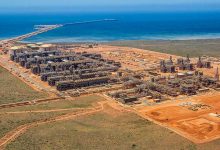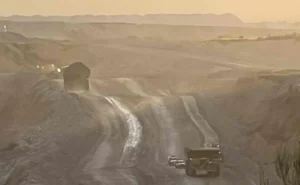The Morrison government will expand the Emissions Reduction Fund to recognise “offsets” generated by carbon capture and storage projects, allowing such projects to receive potentially lucrative carbon credits.
Under a new offset methodology to be developed by the Morrison government, carbon capture and storage projects will be awarded Australian Carbon Credit Units (ACCUs), allowing them to be used to offset industrial emissions or sold back to the government.
Taylor has sought to direct government support into carbon capture and storage technologies after the federal government included it as a ‘priority technology’ in its ‘Technology Investment Roadmap’.
“CCS is a priority under the Government’s Technology Investment Roadmap and the new ERF method will incentive emissions reductions from a range of energy-intensive sectors including LNG production, which currently accounts for around 10 per cent of Australia’s emissions,” Taylor said in a statement on Friday.
“Our north Asian trading partners are relying on gas to reduce their emissions and provide affordable and reliable energy to power their economies.”
“This high-integrity method will position Australia to scale up clean LNG production and make use of our abundant geological storage potential.”
However, the focus on carbon capture and storage technologies has been criticised by environmental groups, as well as a large number of energy market analysts, who point to the technology’s failures to achieve substantial emissions abatement despite receiving billions in government support.
Projects lining up to take advantage of the new methodology are overwhelmingly projects associated with the extraction of oil and gas, including projects that could use stored carbon to ‘enhance’ the extraction of the fossil fuels – leading to an overall increase in emissions.
Oil and gas company Santos welcomed the announcement, saying that it would now proceed with its Moomba CCS Project, which has a planned capacity to store 1.7 million tonnes of emissions per year.
However, analysts at UBS have estimated it could allow for the further extraction of around 2.7 million barrels of oil a year over a period of a least five years.
The announcement comes a day after Taylor announced that the Morrison government would pour a further $250 million into carbon capture use and storage projects. According to the government’s grant documentation, projects receiving this funding may not need to be fully operational for almost a decade.
Allowing carbon capture and storage projects to claim Australian Carbon Credit Units could enable such projects to sell the abatement back to the federal government, under the Emissions Reduction Fund, which has a multi-billion dollar budget to buy ACCUs.
It could also allow the offsets generated by CCS projects to be used by major industrial emitters to offset their emissions under the federal Safeguard Mechanism.
Before the announcement, ACCU prices had surged past $26 per tonne, providing a potentially lucrative revenue stream for projects that can now take advantage of the expanded eligibility.
Taylor said that the government would also develop additional methodologies that will allow offsets to be claimed for the installation of electric vehicle and hydrogen refuelling infrastructure as well as the use of hydrogen in gas networks, electricity generation and steel production.
Methodologies will also be developed to recognise offsets created by integrated farm methods and an expansion of the existing savanna fire management methodology.
The Carbon Market Institute welcomed the addition of the two land-based methodologies to the Emissions Reduction Fund.
“The carbon industry is excited by the focus on a new integrated farm method and expansion of the savanna fire management method, which represent important opportunities for landholders, farmers and traditional owners across the country,” Carbon Market Institute CEO John Connor said.
“CMI’s Landscape Taskforce estimates that a new integrated farm method could result in more than 5000 new projects across 65 million hectares, generating more than 2.5 billion ACCUs worth $50 billion to the Australian economy.”
“These priorities align with the goals of the Australian Carbon Farming Industry Roadmap, and will enable the industry to further support real, practical and meaningful climate actions that generate a range of economic, social, cultural and environmental benefits.”










